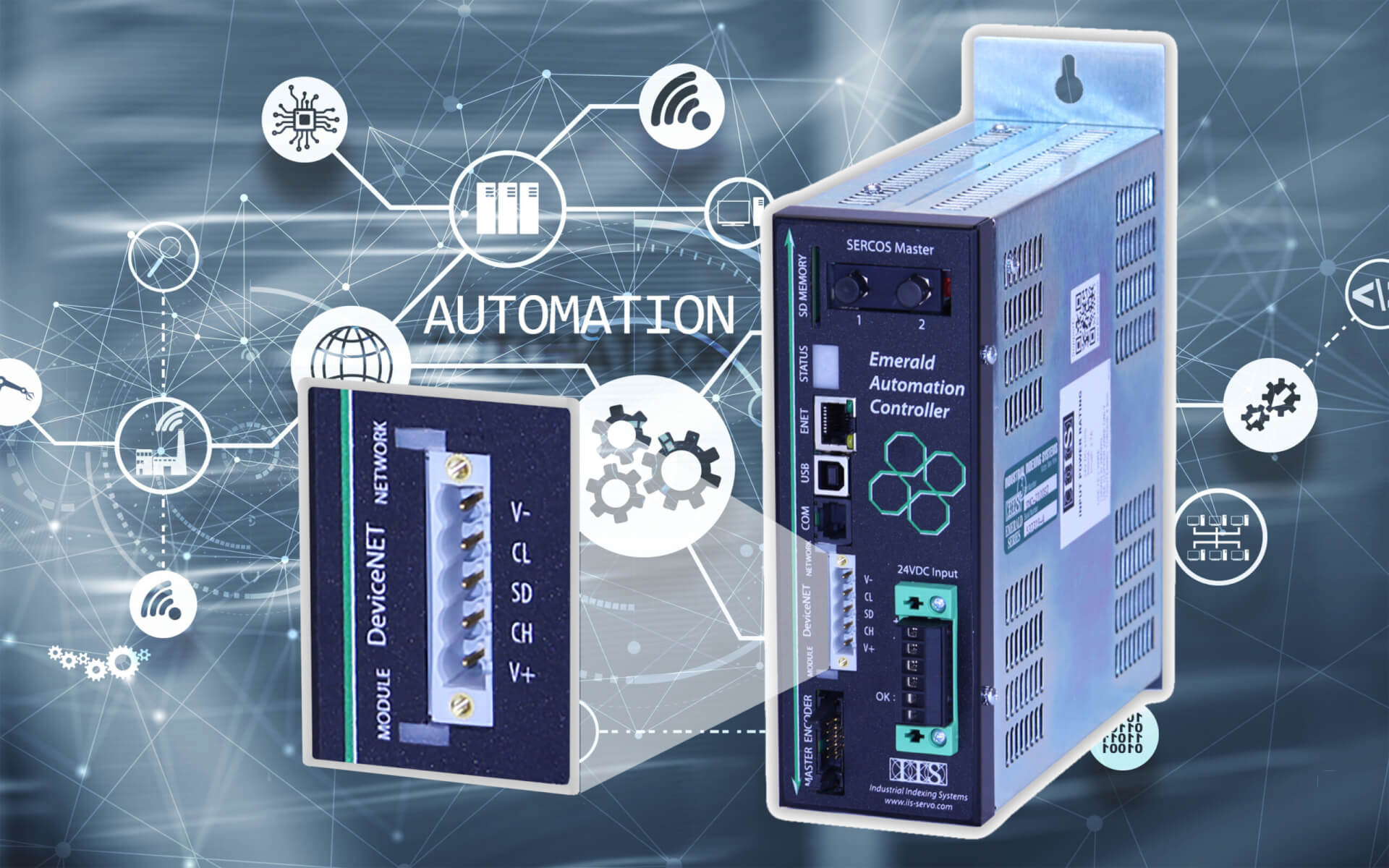DeviceNet is a low cost communications network that connects to various industrial devices such as limit switches, proximity switches, photoelectric sensors, valve manifolds, motor starters, process sensors, bar code readers, AC and DC drives, servo controllers, panel displays, operator interfaces and others.
Here’s a quick overview of the DeviceNet Communications Network.
Benefits of DeviceNet?
One of its major benefits is that it can eliminate expensive hardwiring and the cost and time of installing and maintaining it. The ability to directly connect devices to a network also delivers better communications between those devices, and provides device-level diagnostics that are not easily accessible or available through hardwired I/O interfaces.
Another major benefit is interoperability. Simple devices that meet the standard are logically interchangeable from vendor to vendor. And the DeviceNet- standard makes the interconnectivity of more complex devices possible.
DeviceNet- is an open network standard – the specification and protocol are available to anyone. Any company can design and manufacture a product that meets the specification merely by purchasing the DeviceNet- Specification from the Open DeviceNet- Vendor Association (ODVA). Buyers of this specification receive an unlimited, royalty-free license to develop DeviceNet- products. Sample code, toolkits, development services and key hardware components are available from a number of sources worldwide.
What is the origin of DeviceNet?
The DeviceNet- communications link is based on the Controller Area Network (CAN) protocol originally developed by Bosch in Europe. This broadcast-oriented protocol was first used to replace expensive wiring harnesses in automobiles. As a result, the CAN network has fast response and high reliability – important considerations in the sometimes-harsh automotive and industrial environments.
Is DeviceNet expensive to use?
Increasing automotive, consumer and industrial demand has pushed the cost of CAN chips steadily downward. Tens of millions of CAN chips are shipped every year, compared with (at most) a few hundred thousand of the chips at the heart of other industrial automation networks. This means that the ICs for DeviceNet- products are typically five to ten times less expensive than chips for other networks.
What is the DeviceNet feature set?
| Network Size | Up to 64 nodes | ||
| Network Length | End to end network length varies with speed:
|
||
| Data Packets | 0 – 8 byte | ||
| Bus Topology | Linear (trunk-line/drop-line); power and signal are on the same network cable | ||
| Bus Addressing | Peer-to-Peer with Multicast (one to many); Multi-master and Master/Slave special case; polled or change of state (exception based) | ||
| System Features | Removal and replacement of devices from the network under power |
What is a DeviceNet Device Profile?
This is a formal model defining the basic device characteristics. The General Motion Control Profile in the DeviceNet- specification is quite limited and applies mainly to motion controllers that are not “smart.” The Emerald Series controllers are “smart” devices, and we’ve created software that allows the user to define a Vendor Specific Profile that meets the needs of a particular application.
The motion control program loaded in the Emerald Controllers builds a Parameter Object containing application specific information. Along with other information, this forms the Vendor Specific Profile, thereby making automatic linkages between the EMC-2100 controllers. Once the Vendor Specific Profile is established, application parameter information is passed seamlessly over the DeviceNet- network. This allows the user to configure high level “smart” motion control functions in the controllers, without sacrificing the advantages of DeviceNet- . All Emerald controllers are available with optional scanner software.
More Information on DeviceNet
The Open DeviceNet Vendor Association (ODVA) publishes the DeviceNet- specification and a comprehensive catalog of hardware and software that meets the various device profiles. Contact ODVA at:
1099 Highland Drive, Suite A
Ann Arbor, Michigan 48108
Phone: 734.975.8840
Fax: 734.922.0027
Internet: http://www.odva.org
Email: odva@odva.org


